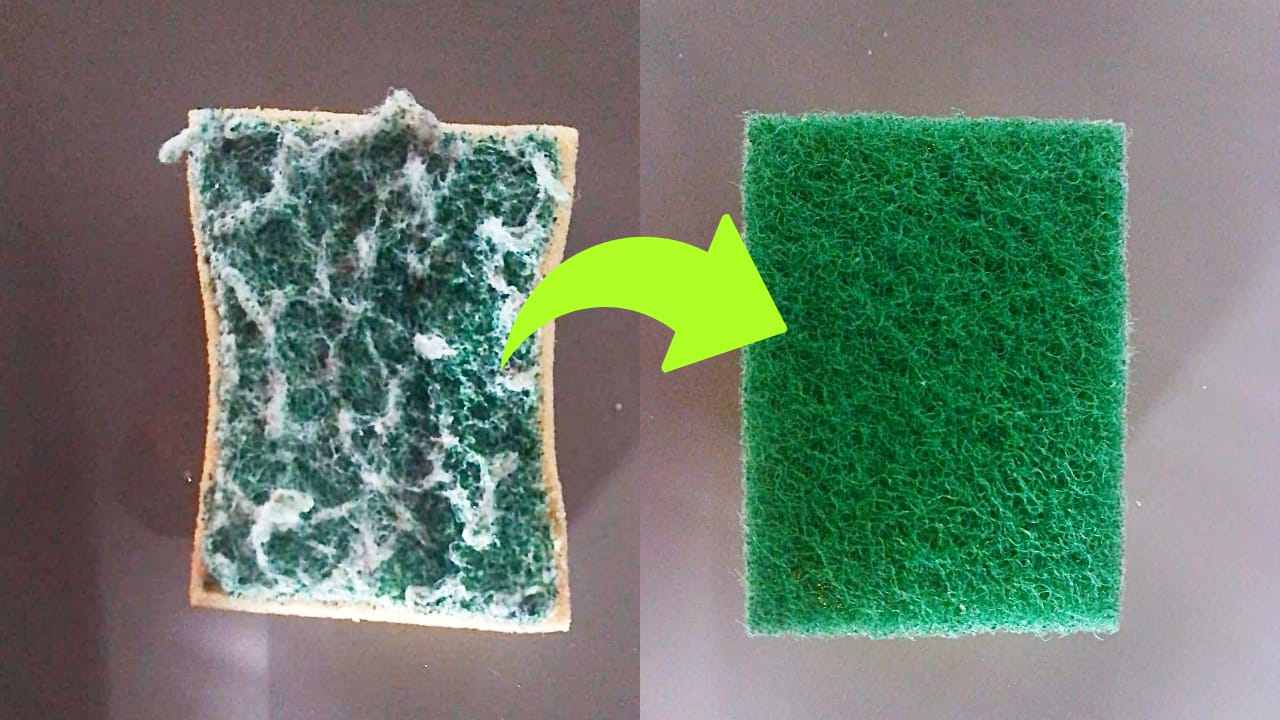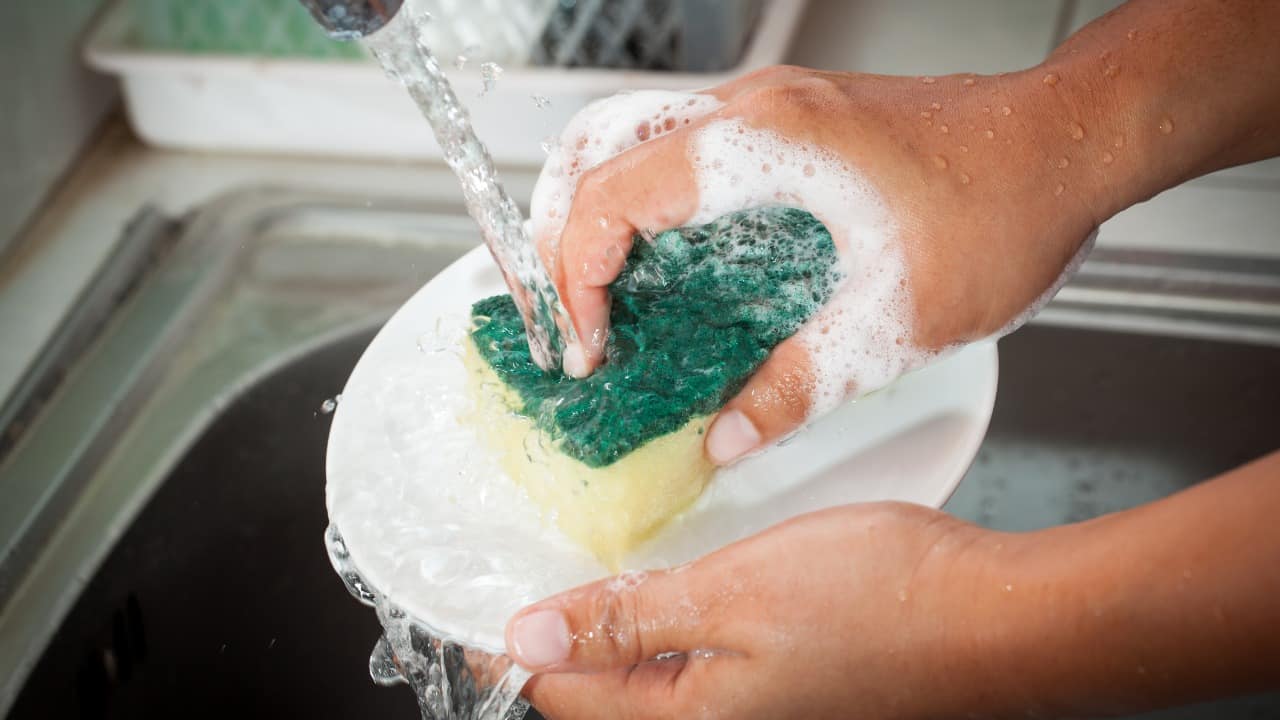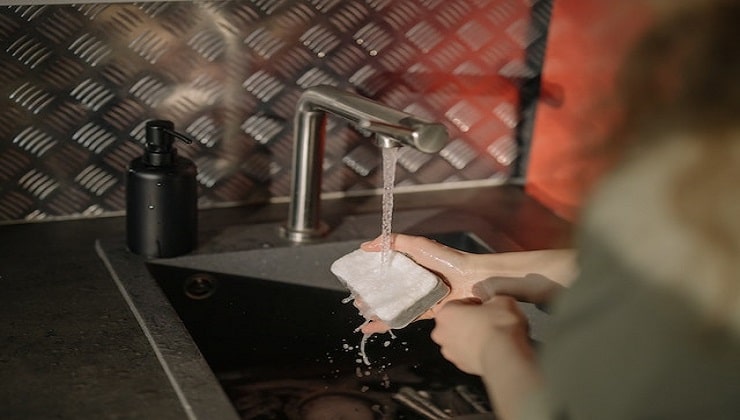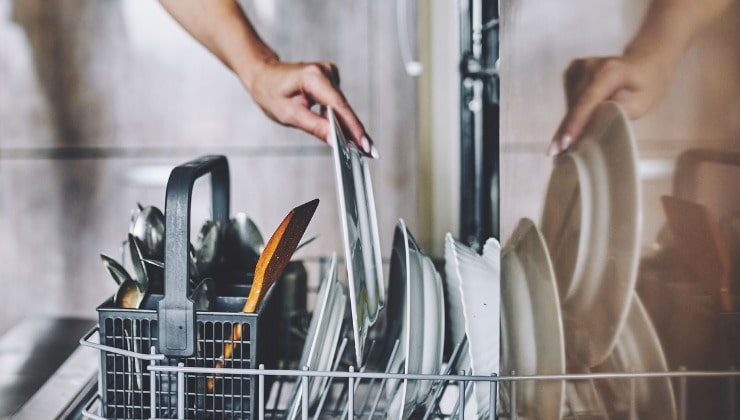
When using the sponge for dishes, you must avoid starting a contamination process in the kitchen, a place intended for the preparation and consumption of food
Generally, most people who dedicate themselves to cleaning the dish sponge believe they have accomplished this task after washing it with water and detergent .
However, neither water nor soap can kill bacteria, which in this case are only temporarily eliminated.
Dish sponge: be careful with bad smell
According to some scientific studies, where analyses were carried out in the laboratory, it was discovered that in different parts of the sponges used for cleaning in the kitchen, the same microbes present in feces are present both inside and on the surface.

In particular, you can notice the bad smell emanating from the sponges, a warning sign about the possible presence of harmful microorganisms ( In the most serious cases we speak of Staphylococcus aureus, Escherichia coli and Salmonella).
These are pathogens that could cause infections, especially in weakened or immunocompromised people. .

However, these bacterial loads can be neutralized through proper sanitation, as well as through a good immune response of the body.
Although it may seem paradoxical, the very utensils intended for hygiene and cleaning work surfaces, as well as dishes, can cause health problems.
Sponges can become an ideal breeding ground for germs and bacteria , due to the moisture and food residue present in them.

Dish sponge: how to clean and disinfect it
there are many of them at least every week , since washing them is not enough, for others it would be enough to do it monthly, but it is necessary to wash them periodically but in the correct way.
Sponges should be properly sanitized, but replaced if worn or damaged. Most people don’t know how to clean the kitchen sponge properly; In fact, it is necessary to clean it with water, soap and a disinfectant.
First of all, any possible food remains are eliminated. After carefully rinsing it, it is prepared in a solution made with: salt, hot water and baking soda and left to soak for at least 20 minutes. a>

If you want to eliminate odors from kitchen sponges, a more effective way is to soak them after washing in a mixture obtained with cold water (hot water tends to set odors and stains), salt and vinegar .
If there are traces of mold, you can add a few drops of tea tree oil (about ten), or hydrogen peroxide and hot water . Once rinsed, drained and air dried.
You could also use bleach, but apart from the strong smell, this product is toxic and also polluting, so it is not “ecological” at all.
Washing in the dishwasher allows them to be sanitized , to do this they will have to be placed in the dishes department.

To avoid the risk of cross contamination, it is advisable to have separate sponges, according to their use, differentiating them by color, for example.
A good way to keep them in good condition is not to leave them in the sink, but to let them air dry, even better if under the sun’s rays.
